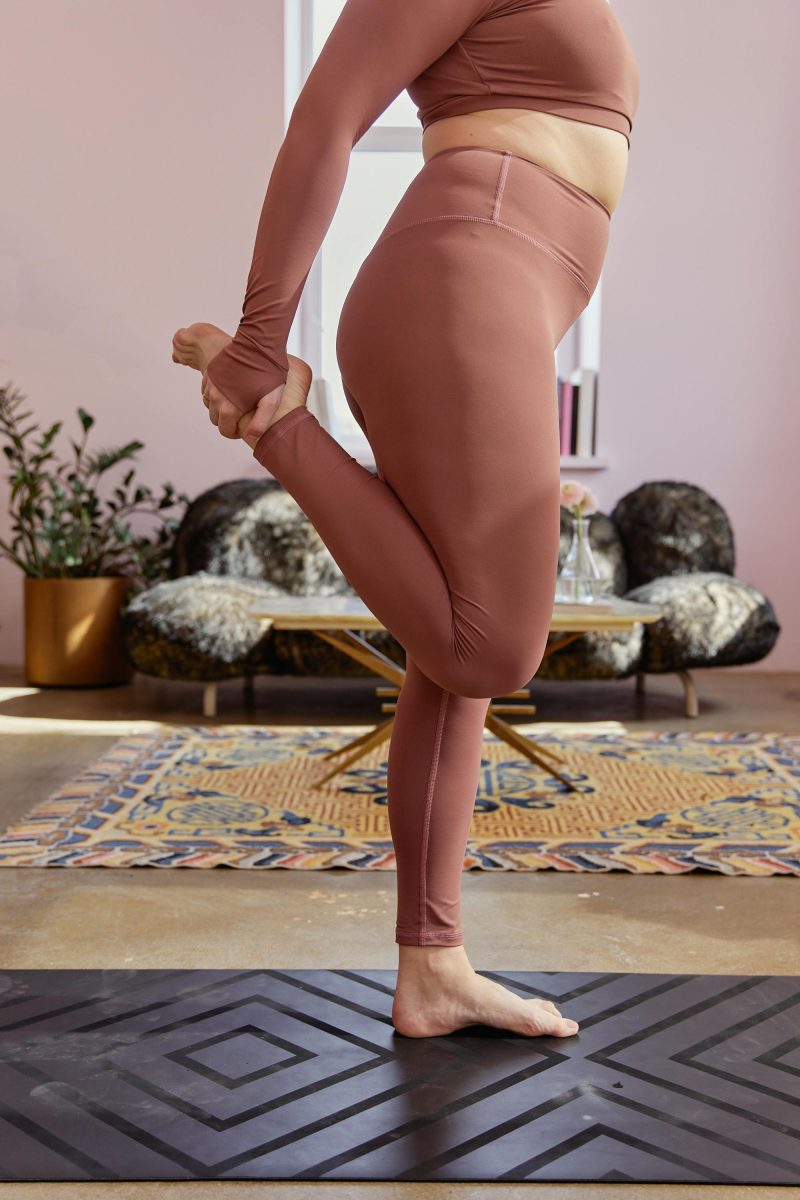Last Updated on: 14th July 2024, 09:04 am
Group vs. Solo Workouts: Finding What Works for You


The debate between group and solo workouts is as old as the fitness industry itself. Each approach offers unique benefits, tailored to different personalities, schedules, and fitness levels. Understanding your personal fitness goals and preferences is crucial in navigating this debate. It’s not just about what works for others; it’s about finding what works for you.
- Personality: Some thrive in the energy of a group setting, finding motivation in the collective effort and camaraderie. Others prefer the solitude and focus of a solo workout, where the only competition is with oneself.
- Schedule: Group classes might offer the structure you need, but solo workouts provide flexibility.
- Fitness Level: Beginners may benefit from the guidance and support of group workouts, while more experienced individuals might opt for solo sessions to focus on specific goals.
Social Interaction and Motivation
Working out with others can significantly boost your motivation and accountability. The shared experience fosters a sense of camaraderie, making the challenge more enjoyable and less daunting. Group dynamics often push individuals to work harder, driven by the collective energy and encouragement.
Structure and Variety
Group workouts, often led by experienced trainers, provide a structured routine. This eliminates guesswork, ensuring a balanced and effective session. Additionally, exposure to various workout styles and exercises keeps the routine fresh and engaging, preventing boredom and plateauing.
Competitive Edge
Friendly competition within a group can spur you to push your limits. Whether it’s a fitness class, a sports team, or a running club, the desire to keep up or excel can enhance your performance. This competitive edge, coupled with support and encouragement from peers, makes group workouts a powerful tool in achieving fitness goals.
The Advantages of Solo Workouts
Embarking on a fitness journey solo offers a unique set of benefits that cater to personal growth and flexibility. At the heart of solo workouts is the ability to personalize your pace and focus. This means tailoring each session to meet your specific goals and needs, whether you’re aiming to build strength, increase endurance, or lose weight. The solitude of working out alone allows for an undistracted focus on personal progress, free from the inevitable comparisons that come with group settings.
- Flexibility and Convenience: Solo workouts provide the freedom to exercise on your own schedule, making it easier to integrate fitness into a busy lifestyle. Whether it’s an early morning jog or a late-night yoga session, the choice is yours. This adaptability ensures that exercise remains a consistent part of your routine, not something sacrificed for lack of time.
- Mindfulness and Stress Relief: The therapeutic aspect of exercising alone can significantly benefit mental health, providing a space for meditation and introspection. This quiet time not only aids in stress reduction but also enhances the connection between mind and body, leading to a more fulfilling workout experience.
Group vs. Solo Workouts: Finding What Works for You
The debate between group and solo workouts is as old as the fitness industry itself. Each approach offers unique benefits, tailored to different personalities, schedules, and fitness levels. Understanding your personal fitness goals and preferences is crucial in navigating this debate. It’s not just about what works for others; it’s about finding what works for you.
- Personality: Some thrive in the energy of a group setting, finding motivation in the collective effort and camaraderie. Others prefer the solitude and focus of a solo workout, where the only competition is with oneself.
- Schedule: Group classes might offer the structure you need, but solo workouts provide flexibility.
- Fitness Level: Beginners may benefit from the guidance and support of group workouts, while more experienced individuals might opt for solo sessions to focus on specific goals.
Blending Group and Solo Workouts for Optimal Results: The Hybrid Approach

The fusion of group and solo workouts creates a dynamic fitness regimen that caters to a broad spectrum of needs and goals. This hybrid approach leverages the motivational atmosphere of group settings with the personalized focus of solo sessions, crafting a well-rounded fitness journey.
Combining the Benefits of Both to Meet Fitness Goals
Integrating group and solo workouts into your routine offers a balanced approach to fitness. Group workouts inject fun, camaraderie, and a dose of healthy competition, pushing you to levels you might not reach on your own. Solo workouts, on the other hand, allow for tailored exercises that focus on personal goals, providing time for reflection and self-improvement.
Strategies for Integrating Group and Solo Workouts into a Routine
Start by identifying your fitness goals. Mix high-energy group classes for cardio and endurance with solo strength training sessions to hone in on specific muscle groups. Listen to your body and mind—opt for group workouts when you need a motivational boost, and choose solo sessions for focused goal-oriented exercises.
Success Stories
Many have found success with this hybrid model. Jane, a marathon runner, credits her performance improvements to combining group runs for endurance with solo speed workouts. Mark, on his weight loss journey, blends group HIIT classes for calorie burn with solo weightlifting for muscle gain.
Tips for Balancing Group and Solo Workouts
Deciding between a group workout and going solo can depend on several factors. Consider your energy levels, social needs, and specific fitness goals for the day. Always allow room for flexibility in your schedule to accommodate both types of workouts, ensuring a holistic approach to your fitness regimen.
Ultimately, the blend of group and solo workouts offers a comprehensive path to achieving fitness goals, providing the social support and personalized focus needed for a successful fitness journey.
Conclusion: Personalizing Your Workout Routine

Throughout this exploration of group versus solo workouts, the key takeaway is the value of personalization in your fitness journey. The decision to engage in group workouts, solo sessions, or a blend of both should be informed by your unique preferences, lifestyle, and fitness objectives.
- Experimentation is essential. Try out both group and solo workouts to discover what energizes you, what challenges you, and what ultimately helps you stay committed to your fitness regimen. There’s no one-size-fits-all answer, and what works for you may change over time.
- Listening to your body is paramount. It will guide you towards the workouts that best suit your needs on any given day. Whether it’s the social interaction and structured environment of a group class or the focused, self-paced nature of a solo session, your body’s response provides invaluable feedback.
Remember, the journey towards your fitness goals is uniquely yours. Embrace the process of finding what works best for you, and let that knowledge empower your workout routine. With each step, you’re not only building strength and endurance but also crafting a path that aligns with your personal growth and well-being.
In Closing
Fitness is a personal journey, not a one-size-fits-all. This exploration underscores the power of choice in fitness. By blending group and solo workouts, you tailor a regimen that suits your evolving needs. The journey from group camaraderie to solo focus mirrors our quest for balance—mixing social support with personal growth. Embrace this hybrid approach as a pathway to not just physical, but holistic well-being. Let your fitness journey be a reflection of your unique path, ever open to adaptation and growth.
Group vs. Solo Workouts: Finding What Works for You FAQs
Group workouts may not offer the same level of individual attention and customization as solo workouts. Scheduling conflicts can arise, and the pace of the class may not suit everyone’s fitness level or goals. Additionally, some people may find the social aspect of group workouts to be more distracting than motivating.
Yes, many group workouts are designed to accommodate all fitness levels, with instructors offering modifications for exercises. It’s important to communicate with the instructor about your fitness level and any concerns you may have. This ensures that you can participate safely and effectively, regardless of your starting point.
Yes, solo workouts can be just as motivating as group workouts, especially if you are self-driven and enjoy personal time. Setting personal goals and tracking progress can provide a sense of achievement. Additionally, using fitness apps or virtual classes can help maintain motivation without the need for a physical group.
To make solo workouts more effective, set clear, achievable goals and keep a workout log to track progress. Incorporating a variety of exercises can keep the routine engaging and cover all aspects of fitness. Using technology, such as fitness apps or online training programs, can also provide structure and guidance.
Balancing group and solo workouts can provide the benefits of both social interaction and personalized training. Consider incorporating group workouts for motivation and community, while using solo workouts to focus on specific personal fitness goals or when your schedule doesn’t allow for group sessions. Listening to your body and adjusting based on your needs and preferences is key.
Consider your personal fitness goals, motivation style, and social preferences. If you enjoy social interaction and external motivation, group workouts might be beneficial. Conversely, if you prefer a personalized routine or need flexibility in your schedule, solo workouts could be a better fit.
Group workouts can be more effective for those who thrive on social interaction and motivation. They provide a sense of community and accountability, making it easier for some to stick with their fitness routine. Additionally, the structured environment of group workouts can push individuals to work harder than they might on their own.
Group workouts offer the benefits of social support, increased motivation, and often a structured environment. The camaraderie developed in group settings can make exercise more enjoyable and less intimidating. Moreover, having an instructor can ensure that exercises are done correctly and safely.
Group workouts, especially those in specialized studios or with premium services, can be more expensive than solo workouts. Membership fees, class costs, and commuting can add up. In contrast, solo workouts can be more cost-effective, especially if utilizing free resources or investing in home equipment that pays off over time.
Start with classes designed for beginners or consider bringing a friend to feel less intimidated. Many people feel nervous at first, but instructors are typically welcoming and can help ease you into the group. Over time, the supportive environment of group workouts can help build confidence and comfort.
Orlando is a all round athlete from Australia, now resident in Germany. His sports of passion of American Football(Offensive line), weight training and indoor rock climbing where he uses his 195cm wing span to his advantage.



